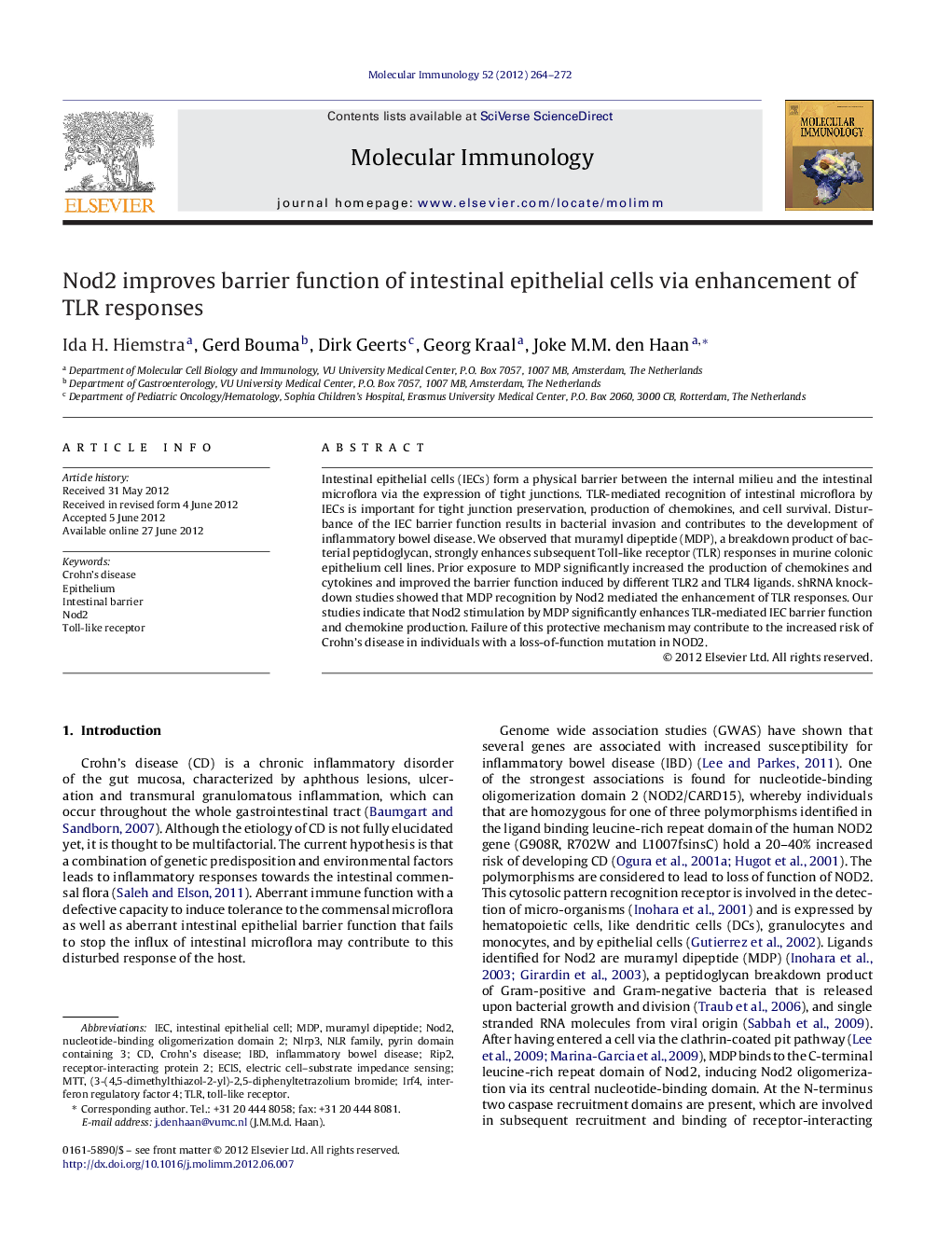| Article ID | Journal | Published Year | Pages | File Type |
|---|---|---|---|---|
| 2830946 | Molecular Immunology | 2012 | 9 Pages |
Intestinal epithelial cells (IECs) form a physical barrier between the internal milieu and the intestinal microflora via the expression of tight junctions. TLR-mediated recognition of intestinal microflora by IECs is important for tight junction preservation, production of chemokines, and cell survival. Disturbance of the IEC barrier function results in bacterial invasion and contributes to the development of inflammatory bowel disease. We observed that muramyl dipeptide (MDP), a breakdown product of bacterial peptidoglycan, strongly enhances subsequent Toll-like receptor (TLR) responses in murine colonic epithelium cell lines. Prior exposure to MDP significantly increased the production of chemokines and cytokines and improved the barrier function induced by different TLR2 and TLR4 ligands. shRNA knock-down studies showed that MDP recognition by Nod2 mediated the enhancement of TLR responses. Our studies indicate that Nod2 stimulation by MDP significantly enhances TLR-mediated IEC barrier function and chemokine production. Failure of this protective mechanism may contribute to the increased risk of Crohn's disease in individuals with a loss-of-function mutation in NOD2.
► A potential role for Nod2 in colonic epithelial barrier function was explored. ► MDP enhances TLR-induced chemokine responses in colonic epithelium cell lines. ► MDP improves TLR2-induced barrier function in colonic epithelium cell lines. ► MDP recognition by Nod2 and not Nlrp3 mediates the enhancement of TLR responses. ► Nod2 mutations might contribute to Crohn's disease by affecting epithelial barrier.
